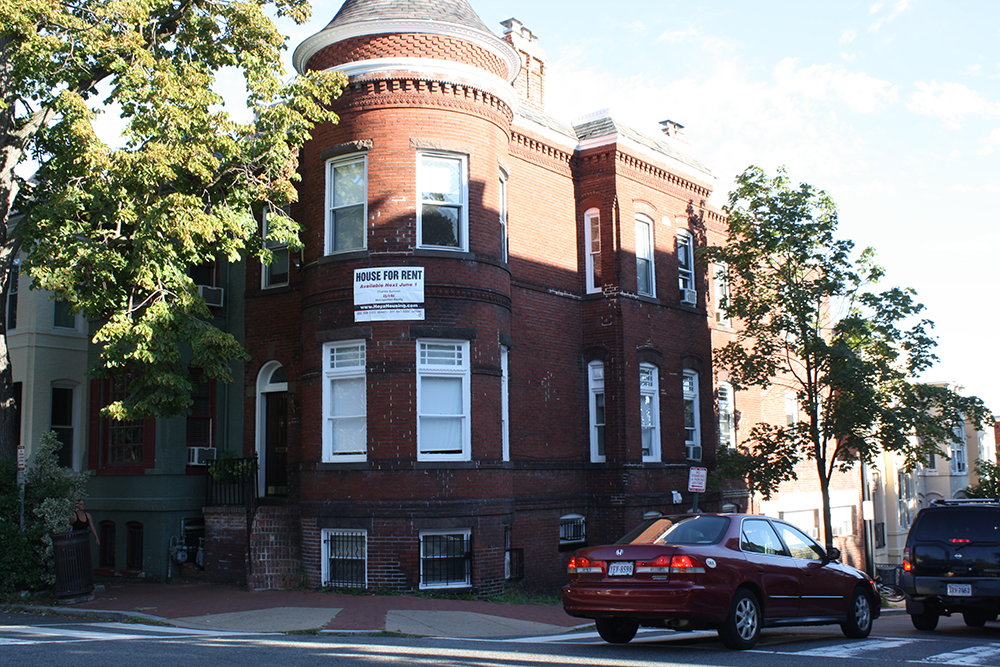
Residences like this one at 34th and Prospect Streets in West Georgetown will have to find new tenants as student living shifts toward campus.
From the proposed satellite residence to the repurposing of Magis Row townhouses, Georgetown is gradually making the 2010 Campus Plan agreement come to life. One demographic seldom discussed in this shuffling, however, are those whose livelihood comes into play: local landlords.
With the university’s commitment to housing 90 percent of students on campus by 2025, Georgetown landlords who have relied for years on student tenants may see a profound shift in their clientele. As it stands now, 33 percent of students live off campus, most in Burleith and West Georgetown.
Currently, off-campus rent can start as high as $900 dollars, depending on location and quality of the residence. In contrast, on-campus housing per person per semester ranges from $4,756 to $5,121, which comes out to approximately $1,189 to $1,280 per month for each student. In other words, on campus housing is currently more expensive than off campus housing overall.
Long and Foster Property Management Corporate Manager Jean Poitevien, who controls more than 300 properties in the District, had not initially heard about Georgetown’s impending shift on campus but confirmed that it would indeed affect local landlords.
“It would definitely have an adverse effect on landlords and renters who cater specifically to students,”Poitevien said.
In Burleith, student demand has led to high rental prices — a housing bubble that Richard Huber, a 20-year landlord of two Georgetown properties, said would burst if hoards of students move on campus.
“There’s a high demand now for houses in Burleith, but these windfall rents will diminish,” Huber said.
The shift on campus would affect members of the local community beside landlords.
“It would be a big hit to the economy of the community and to local businesses,” said Sara Tinsley, a housekeeper for a property management service, Hoya Properties, which owns five buildings in Georgetown. On the other hand, James Mula of Traditional Property Management, which services almost 20 properties in Georgetown, said that as long as the property is of high quality, owners will adapt.
“It won’t affect me that much [because] I have good properties and good areas in the front of campus,” Mula said. “For any landlords who have properties in good shape, that demand will always be met. I think it will affect landlords with below-average properties.”
Mula added that despite the reduction in demand from the undergraduate population of Georgetown, there is a large market in the graduate student population.
Georgetown students rent 75 to 85 percent of Mula’s properties, and 40 percent of that number are graduate students. Huber likewise said he would return to renting to graduate students and young professionals if undergraduates go off the market.
Peter Pacinelli owns one property in Georgetown, and much like Mula and Huber, he expressed little doubt in his ability to adapt.
“I take these things like this with a grain of salt,” Pacinelli said.
Some landlords that own property in Georgetown relish the possibility of a quieter neighborhood.
“It’ll be great for the neighborhood, and I think there will still be demand [for properties],” Pacinelli said.
Hoya Staff Writer Andrew Wilson contributed reporting.














